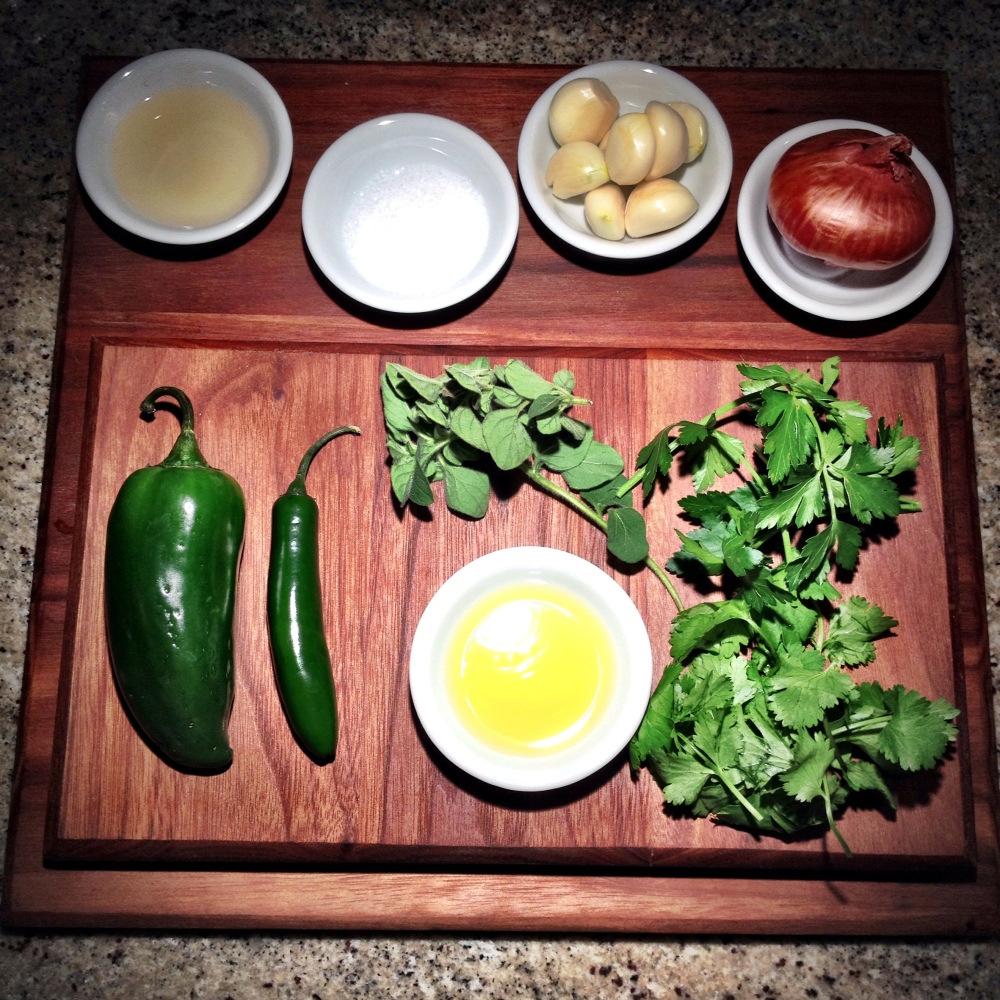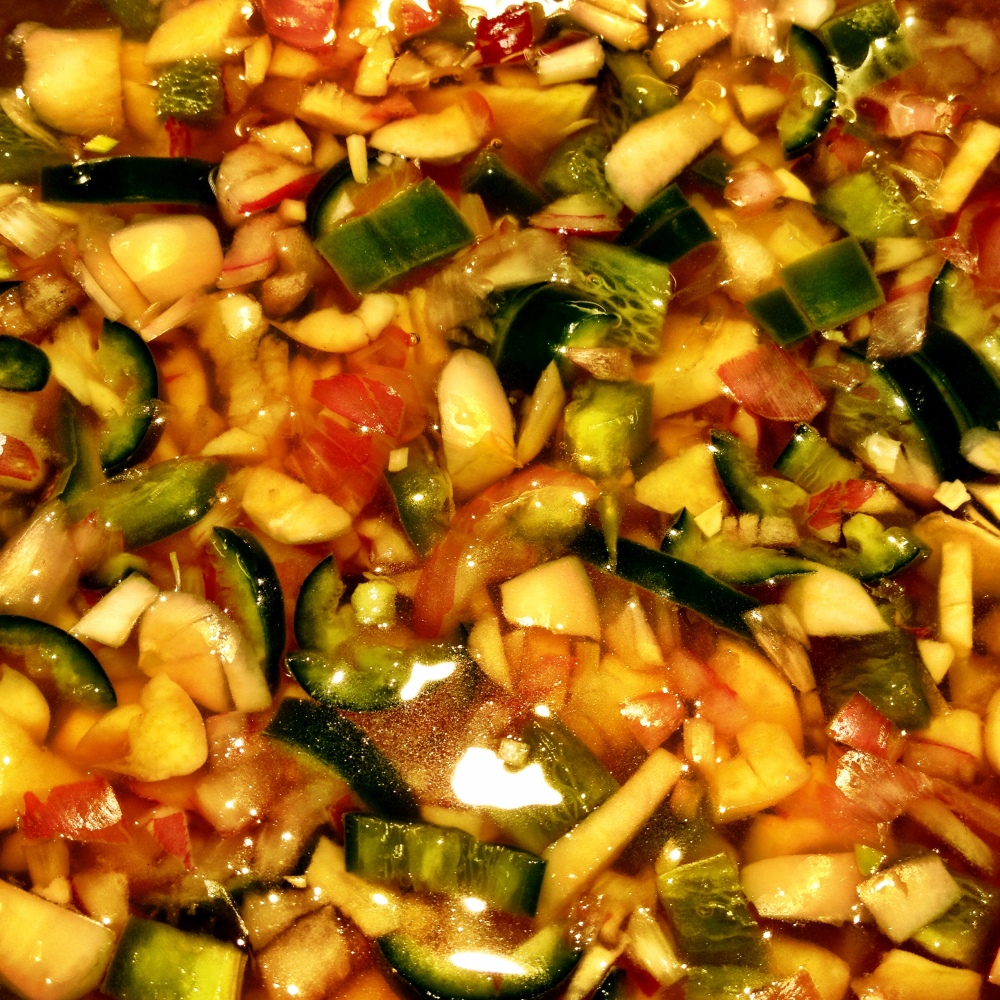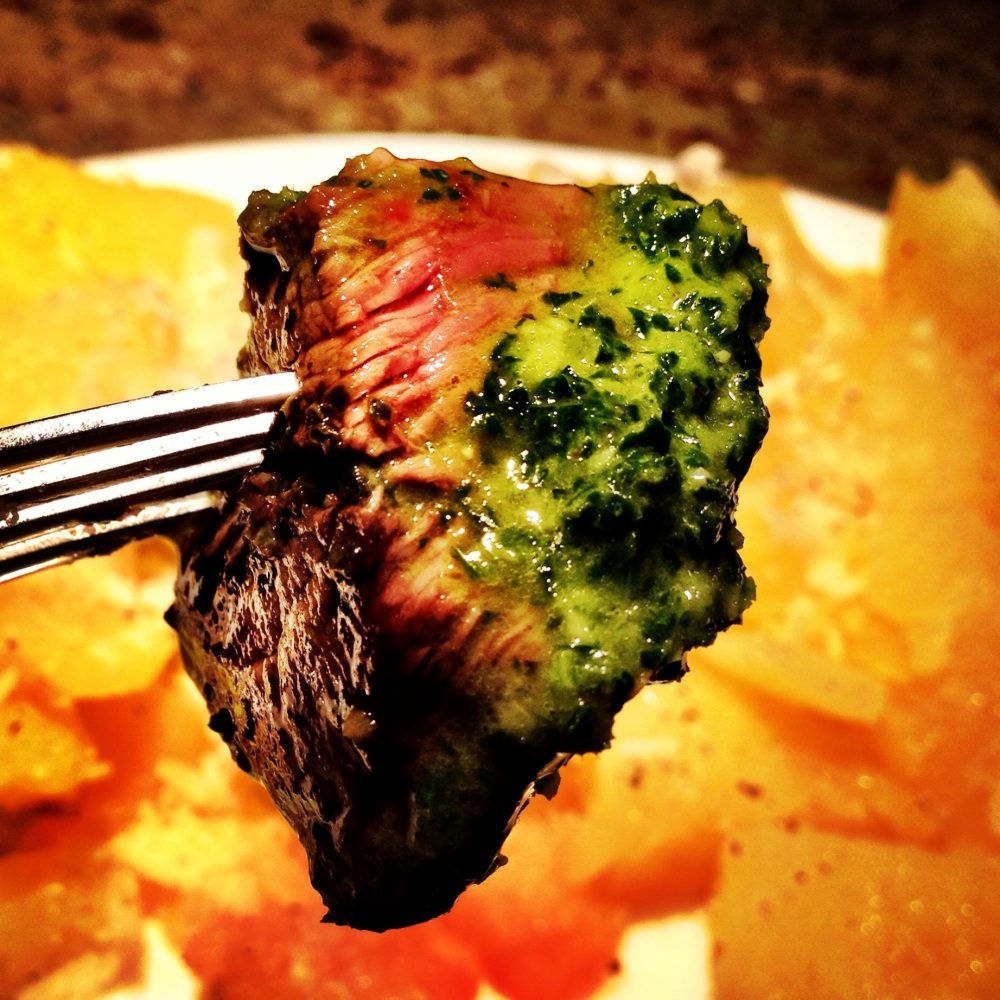
If your family’s like mine, there’s probably a holiday roast in your future. Something big and beefy (or porky) and brilliant, and most likely, fat-tastic. Maybe porchetta, or perhaps prime rib. Either way, you probably need a sauce bright and tangy enough to cut through all that deliciousness.
Enter that darling of every Argentinian table – the multi-purpose, put-it-on-fricking-everything condiment – chimichurri.
Some people will tell you it’s exclusively a steak sauce. Those people are dumb. They’re not wrong, necessarily – it is used, primarily, in its home country, to dress up beef – and God knows the Argentines eat enough of it – but to limit its use to just that is to ignore its shiny, zippy, slightly spicy, herbaceous appeal – with chicken, fish, pork, broiled tofu, cold pasta salads, toasted sandwiches, pizza – it’s so stupidly simple, and delicious.
But where this stuff truly shines is on a good piece of beef. And, unlike some other sauces often paired with holiday roasts (béarnaise comes to mind) chimichurri’s dominant notes of acidity and heat contrast perfectly with that big ol’ rib roast you’ve got going – and, unlike horseradish, lends some vegetal complexity. And, hell, it just looks good on the table.

Chimichurri
Ingredients:
- 5 oz apple cider vinegar
- 1 1/2 teaspoons kosher salt
- 8 garlic cloves, minced
- 1/2 jalapeño pepper, seeded and minced
- 1 Serrano pepper, seeded and minced
- 1 shallot, chopped
- 2 small bunches flat-leaf (Italian) parsley, washed, excess water squeezed away
- 1 small bunch cilantro, washed, excess water squeezed away (YES, cilantro. If you don’t like it, use ALL parsley. But it’ll be missing something.)
- 1/3 cup fresh oregano, chopped
- 3/4 cup extra-virgin olive oil
- red pepper flake (optional, but recommended)
- Get thee a bowl, and put the vinegar, salt, garlic, shallot, peppers (and red pepper flake, if desired) in, and let it sit around for about 15 minutes.

- In the meantime, get the cilantro and parsley and remove the long stems from all the bunches (you should be able to cut through the stems of each bunch all at once, pretty easily.) Remove ALL the thick stems from the oregano. Make sure herbs are dry(ish).
- Begin chopping herbs finely (or place vinegar mixture and herbs into food processor). Mix chopped herbs in with vinegar mixture (or start food processor) while whisking in (or pouring in) olive oil. If using a food processor, blend until all ingredients are well-integrated.
- Add salt to taste.
And that’s it. Pretty fricking easy, right? You may find horseradish taking a back seat. All the way back.
Chimi is best served in a bowl, with a small ladle, and a card in front for novices that reads:
NOT-FUCKING-AROUND SAUCE
Your grandmother would approve.
(Covered, this stuff will last for a week in the fridge. If it tastes like it’s losing its oomph, add a splash of apple cider vinegar and some pepper.)
BTW: flat iron steaks are tasty as hell. ESPECIALLY WITH CHIMI.
Look, I love you guys, but I wasn’t about to buy a whole prime rib just so I could show you how to make chimichurri – but I definitely wanted a cut that would showcase the sauce’s versatility. I mentioned this to Jason, one of the meat counter dudes at Whole Foods, and he pointed me directly to the flat iron steak, a hunk of chuck that’s a pain to get to, butchering-wise, which is why it’s not often featured in markets or on menus. But it’s certainly well-marbled AND lean, and packed with flavor. It could use a little marinating, though. A perfect match for chimi, then, which can, and often does, double as a marinade.
So if you decide to do as I do, here, and want to work up some steaks for a casual meal, do this:
1. Go to your local butcher/meat counter and ask for some flat iron steaks. They’ll be thin, and come in somewhere between 1/3 to 2/3 of a pound.
2. Bring them home and cut a cross-hatch pattern into them on both sides with a sharp knife. (Be careful not to cut all the way through, obv.)
3. Toss them into a bowl or plastic bag. Pour on enough chimi to cover. (This recipe will give you enough to cover 4-6 steaks and have plenty left over for sauce.) Make sure all steaks are well-covered with marinade, and refrigerate for at least 45 minutes, not more than 2 hours.)
4. About 15 minutes before you want to begin cooking, set a cast-iron skillet over high, high heat, or preheat skillet in a 500° oven. Yes, you might get some smoke. Open a window. Yeesh.
5. If your skillet is in the oven, pull it and place it over high heat. Pull steaks from marinade, let some but not all excess drip off, and begin cooking steaks in batches of 2 or 3, depending on the size of your skillet, for about 4 to 4 1/2 minutes a side for medium rare.
6. Take whatever potato dish you were making while the steaks were marinating (and really, this kind of dish is what potatoes are FOR) and sprinkle on some freshly grated cheese, because Parmigiano-Reggiano over freshly mashed or baked or fried potatoes is a winner, carbs be DAMNED.
7. Serve steaks and potatoes alongside a dish of the chimi, and get to slathering that green goodness on everything – potatoes, steak, your napkin, your boots, junk mail. You’ll find it’s all pretty tasty, once the chimi gets on it.

[Note: this method is obviously playing by winter rules. If you want to grill that stuff, go ahead, but you might find the crust built up by the marinade on your skillet is superior to what you can get from your grates. Just thought I’d mention it.]
Happy holidays, everyone. Enjoy!
-Theo

